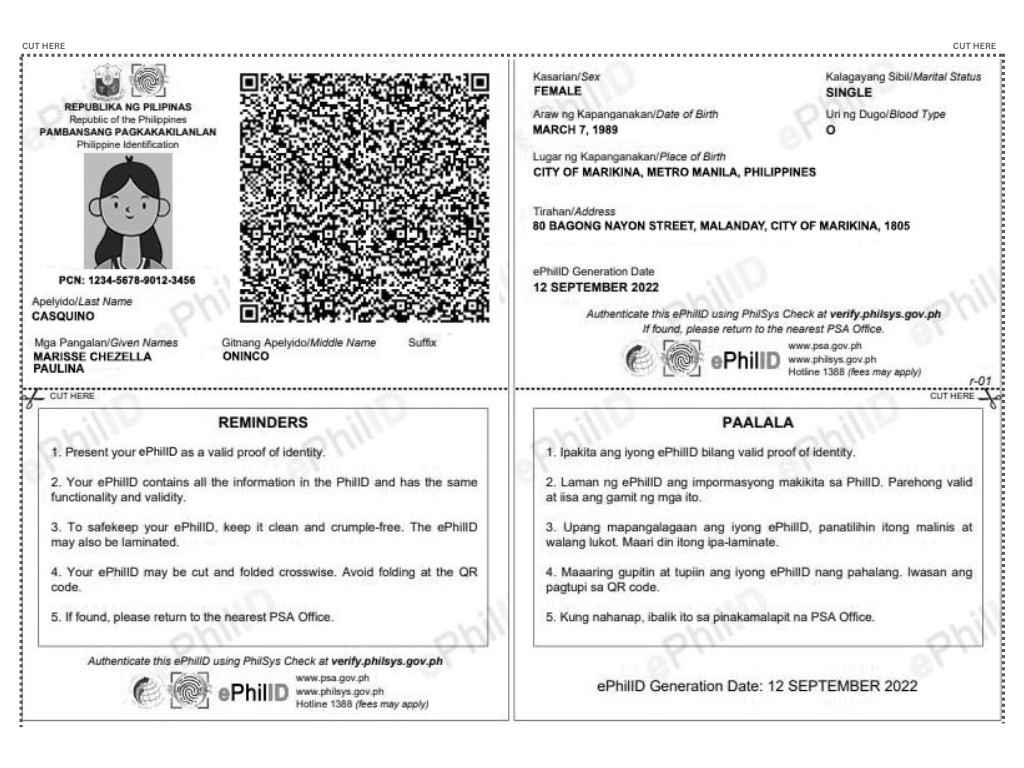Gov't eyes to complete PhilSys ID distribution by yearend
At A Glance
- Secretary Balisacan says Marcos is closely monitoring the PhilSys project and wants it to be centralized and available to all agencies.
- Balisacan explains that the government has agreed to distribute the digital IDs before the physical IDs.
- The DICT will now lead the provision of digital IDs while the PSA will continue with its physical ID production and distribution.
The government is targeting to distribute all electronic or digital copies of the national ID (ePhilID) by the end of the year as the progress of the Philippine Identification System (PhilSys) project has caught the attention of President Ferdinand "Bongbong" Marcos Jr.

National Economic and Development Authority (NEDA) Secretary Arsenio Balisacan said this as many Filipinos have yet to receive their IDs even years after registering for the PhilSys.
The PhilSys establishes a single national identification system for all citizens and resident aliens of the Philippines. It has several formats: physical ID, the printable ePhilID, and the digital ePhilID.
In a press briefing in Malacañang, Balisacan said Marcos himself is closely monitoring the project and wants it to be centralized and available to all agencies.
"No less than the President has been monitoring closely the completion of this project. There have been some delays, but the problems are being addressed," he said.
The NEDA chief said the government has agreed to distribute the digital ID before the physical IDs, and the Department of Information and Communications Technology (DICT) spearheads the effort.
He added that they were already halfway through the production of the physical IDs, but they were hoping that all Filipinos would have their digital IDs by the end of 2023.
"We realized that we should first make those digital IDs so that anyone who has a phone can already use the digital ID, and that is now the primary responsibility of the DICT," Balisacan explained.
"I think we are more than halfway in the physical ID, but I said we want to speed up the digital ID so that, sana before the end of the year kumpleto na lahat (we hope that by the end of the year, everything is complete), everyone will have a digital ID," he added.
Balisacan said the DICT will now lead the provision of digital IDs while the Philippine Statistics Authority (PSA) will continue with its physical ID production and distribution.
According to the NEDA chief, the national ID project completion is essential as it will reduce government and private transaction costs.
It would also allow the government to save resources under its social protection programs since many income transfers targeted at the poor do not end up with the intended beneficiaries because of the leakages.
With the digital ID, however, the "ayuda" or transfer income support like the food stamp program of the Social Welfare department will now be delivered through the digital card with the use of the digital IDs.
"So, each of us will have a unique ID, and you can no longer tamper with that," Balisacan said.
"Wala na iyong nagdudoble iyong benefits na nari-receive or ghost beneficiary or mga ganoong klaseng issues (There will be no more double benefits being received or ghost beneficiary or issues like that),” he added.
The various formats of the PhilID contain the demographic and biometric information of the registered person collected during registration.
The PhilID shows the person's PhilSys Card Number and other basic information such as their name, sex, blood type, marital status, date and place of birth, address, a front-facing photograph, and a QR code.
Last month, the Anti-Red Tape Authority (ARTA) called on all government offices and agencies in the Executive Branch to accept and acknowledge the various formats of the PhilID issued by the PSA. This is to improve efficiency in the bureaucracy further.